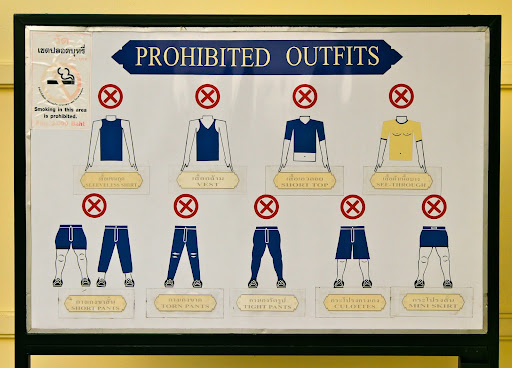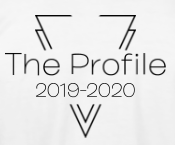Unravelling the Dress Code: Why is the dress code so destructive?

November 4, 2022
Google Images: A sign used to describe the dress code of a school.
A deadly disease has infiltrated education. All around the world, two words, “dress code,” have taken over the entire school system. Not only stripping all different groups of students their capacities to learn, but insinuating, to specifically young girls and women, that they are sexual beings and forever will be viewed as such.
Teen and child sexualization, especially sexualization of young girls, is a pattern that ripples within just about every atmosphere. The grocery store, the park, school, and basically anywhere else you can think of. Unfortunately, society cannot regulate all of the creeps and their thoughts roaming freely throughout these spaces. However, in school, it is considered normal and excused by the world famous “dress code” term.
According to Merriam Webster, dress code is best defined as the “formally or socially imposed standards of dress.” Now, of course I am not in utter disagreement with this definition nor suggesting that people should show up to class shirtless, obviously. What I’m saying is that the heavily forced administration of what students, in most cases female, can or cannot wear is inherently and subliminally proposing that their bodies are inappropriate. Ultimately, sending a message that they should not only be disgusted with themselves, but should confine themselves based on what others deem as most comfortable for, let’s be honest, boys and men. To prove this theory, I interviewed a few Horizon students to expand on their thoughts and experiences with the topic:
Question: What are your experiences with a dress code and how do you think it impacts you and your education?
Anonymous 1: “My experience with a dress code is, the only word I can think of, is bad. I have been dress-coded throughout my entire life and about a week after each time, I would cover my entire body from head to toe. I was literally pulled out of class once to change my “inappropriate” outfit which showed about an inch or two of my mid-drift. To put it simply, it just makes me feel weird and gross.”
Anonymous 2: “The dress code in every school is inherently sexist. Even if the education system refuses to admit it, the standards are based on how boys and men will benefit. I might feel different if the restrictions were encouraged the same amount for boys and girls, but they’re not.”
Anonymous 3: “I feel like a lot of the time when someone is dress-coded it feels like you are solely being characterized by what you wear. Most of the time, it is girls. Obviously this problem isn’t just Horizon but the whole structure feels like it is set up in a sexist way.”
It is evident that the built-in inducement of insecurity that results in the harshly controlling dichotomy between schools and students, is detrimental. You are directly being told by an adult, an authority figure, that what you are wearing will eventually lead to something terrible and it will be your fault for “not covering up.” Why are we viewed in such a way in the first place? We are actual children, who whether we choose to be there or not, attend school to gain knowledge. And when someone older and in more power than you addresses a part of your body in a way that you may not have even considered yourself before, the outcome is brutal. Is there something wrong with my shoulders? Is showing my knees going to “distract all the boys?” The internal questioning is extensive.
Overall, a dress-code is excusatory. It allows for justification for the sexualizing of teens, more often than not, teen girls, and forces an oppressive standard for women on the basis of what they can and cannot do in their lives. The dress code needs to be fought against. Society needs to start empowering young women and girls, not for their bodies, but for their minds.

